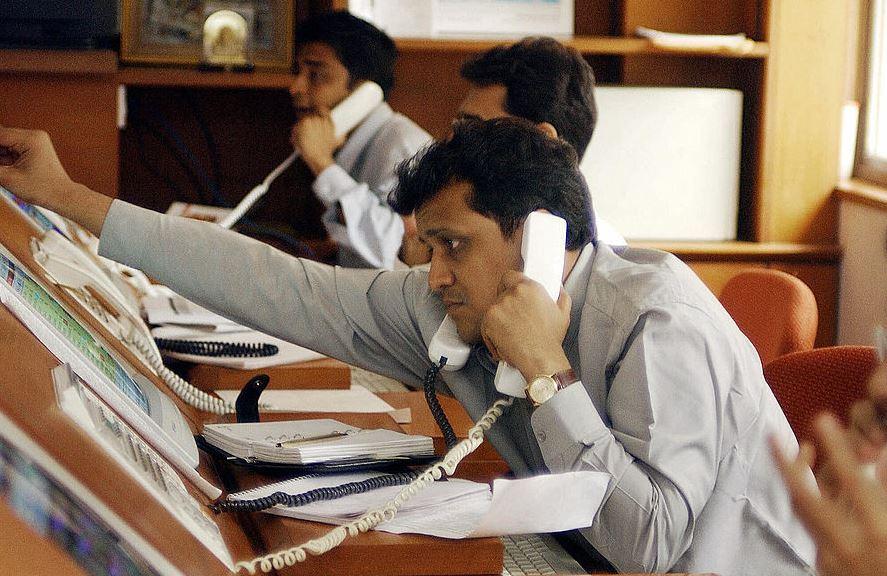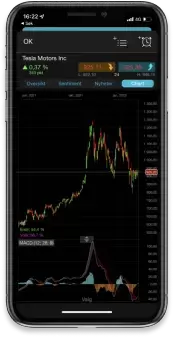11-5-2020 11:00:2111-5-2020 10:31:15European and US equity markets underwent a turbulent session yesterday, eventually finishing the day on the up, as politicians queued up one behind the other throughout the day to announce a series of ambitious fiscal stimulus measures, in an attempt to head off what is likely to turn into a deep recession and possible financial crisis, for millions of people.
The widespread and wholescale economic shutdowns being announced in the last few days, have the potential to plunge millions of people into huge financial difficulties as governments take high stakes steps to beat back the invisible enemy of the COVID-19 pandemic
Whether the gains seen yesterday hold is another matter given the brutality of recent declines, and the inability of markets to muster any momentum behind recent rebounds. While the record books will show that the S&P 500 closed 6% higher, it also can’t disguise the fact that it fell over 11% the day before, while the Dow had its worst day since 1987.
In Asia the gains in the US and Europe are struggling to stick, while the Australian market has plunged sharply, with the consequence that US futures have rolled over again and are currently 5% limit down.
Markets here in Europe don’t look much better, and are set to open sharply lower as fretful investors look to find an equilibrium and decide whether yesterday’s measures are likely to be enough. Italian regulators yesterday extended a short-selling ban to 90 days and given current volatility it probably won’t be long before other bans come into force from panicked authorities.
With politicians facing the prospect of multiple businesses looking at laying off hundreds of thousands of staff as they shutter operations, the calls for measures to help business overcome the hump of large-scale economic disruption proved impossible to ignore.
Faced with the prospect of meeting the costs of massive welfare bills, and the prospect of multiple business failures, politicians from Europe, the UK and the US announced a series of measures designed to help steer their respective economies through the uncharted waters of an economic shock of a yet unspecified magnitude, as borders across Europe get closed down, in an attempt to keep a lid on the number of rising virus cases.
The French government announced a €45bn package, along with the possibility of nationalising some companies in difficulties. The Spanish government also announced the prospect of a €200bn aid package, which included €100bn of state loan guarantees.
These paled into insignificance to the actions of the UK government, which one week on from last week’s Budget proposals, increased the £30bn package of last week, to £330bn of loan guarantees, equivalent to 15% of GDP, as well as saying that the government would go further if required. The chancellor also pledged an additional £20bn of measures, including the suspension of business rates for all retailers, as well as other under pressure services industries. He also offered a £25k grant for any small business with a rateable value of less than £51k.
In addition to that there was help for households with a three-month mortgage holiday, with other measures on incomes and employment due to be announced in the coming days, with the chancellor insisting that he would do “whatever it takes” to support the economy. The big question is whether it will be enough and on that the jury is most definitely out, with the prospect that any final bill may well be much higher.
This was followed by the US administration announcing their own package of measures, which could amount to up to $1trn, along with up to $300bn in deferred tax payments. Any measures will still need to get pushed through Congress, and Democrats will quite rightly look to attach stringent conditions to any plan that includes the bailing out of big companies, with conditions that prevent the payments of dividends, buybacks or bonuses. Democrat senator Elizabeth Warren has already tabled a list of conditions, which include the former, as well as a $15 minimum wage.
While all of these numbers appear impressive on the surface, the uncertain nature of how the virus will play out in the coming weeks, means that the final bill could well be much higher, and in that context appears to be acting as an anchor on the extent of any recovery in asset prices.
On the data front we have the latest inflation and trade numbers for January from the EU, along with the latest new car registrations for February. The inflation and trade numbers aren’t likely to be too instructive, however the new car registrations for February are likely to continue the weakness we saw in January when sales declined by 7.5%.
EUR/USD – continues to look weak, sliding back below the 50-day MA at 1.1050, with the potential to head back towards the lows at 1.0780. A move below the 1.0920 level could well be the catalyst for just such a move. Rebounds need to overcome the 1.1240 level to retarget the recent highs above the 1.1400 level.
GBP/USD – slid below the 1.2200 area and has headed towards the 1.2000 area with larger support at the 1.1960 area. The 1.2200 area now becomes resistance on any pullback. The 1.1960 is a huge area of support with a break targeting a big move lower towards 1.1500.
EUR/GBP – still looks well supported with resistance at the 0.9200 area within touching distance. A move through the 0.9200 area targets the previous peaks at 0.9325. A fall back below the 0.8980 area could well see these gains unwind quickly.
USD/JPY – currently below the 200-day MA at 108.30, a break of which is needed to retarget the 109.20 area. While below 108.50 the risk is for a return to the 104.20 area.
Disclaimer: CMC Markets is an execution-only service provider. The material (whether or not it states any opinions) is for general information purposes only, and does not take into account your personal circumstances or objectives. Nothing in this material is (or should be considered to be) financial, investment or other advice on which reliance should be placed. No opinion given in the material constitutes a recommendation by CMC Markets or the author that any particular investment, security, transaction or investment strategy is suitable for any specific person. The material has not been prepared in accordance with legal requirements designed to promote the independence of investment research. Although we are not specifically prevented from dealing before providing this material, we do not seek to take advantage of the material prior to its dissemination.







